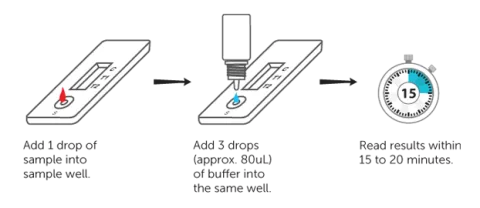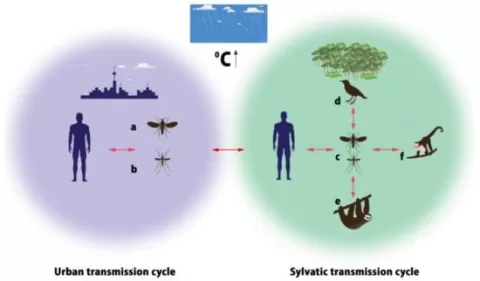L-type BSE prions, a variant of bovine spongiform encephalopathy, have raised significant concerns within prion disease research due to their potential implications for human health. Recent studies investigating the link between mad cow disease and its human counterpart, variant Creutzfeldt-Jakob disease (vCJD), suggest L-type BSE prions might pose a similar risk. In a groundbreaking BSE infection study, researchers administered these prions to macaques, aiming to evaluate their transmissibility and effects over an extended observation period. While no clinical symptoms were observed, the presence of prion proteins in lymphoid tissues indicates that L-type BSE can indeed infect other species, reinforcing the ongoing fear of prion diseases. As the lines between animal and human prion infections blur, understanding the behavior of L-type BSE prions becomes crucial in mitigating CJD risk and developing effective interventions.
The investigation of L-type variants of bovine spongiform encephalopathy (BSE) prions has ushered in a pivotal era of inquiry into prion diseases and their implications for human safety. Known colloquially as mad cow disease, BSE has long been the subject of numerous studies due to its connection with neurodegenerative disorders in humans, particularly the variant form of Creutzfeldt-Jakob disease (vCJD). This emerging focus on L-type prions seeks to determine their transmissibility and pathogenicity, especially concerning their potential to infect primates such as macaques. With prion proteins being at the heart of prion disease research, understanding their properties and behavior in new hosts is crucial. As researchers delve deeper into the insights offered by recent BSE infection studies, the urgency to evaluate the risks associated with L-type prions intensifies.
Understanding L-type BSE Prions and Their Impact on Human Health
L-type bovine spongiform encephalopathy (BSE) prions are a variant of prions that have raised concerns about their potential zoonotic transmission to humans. This type of prion is linked to particular strains of BSE that could lead to serious neurological conditions if transferred to human hosts. The recent research focusing on the inoculation of macaques aimed to delve into the risk posed by L-type BSE, especially in comparison to the well-documented risk associated with classical BSE and its linkage to variant Creutzfeldt-Jakob disease (vCJD). By observing macaques—considered an appropriate model for human susceptibility—the study sought to clarify whether this variant poses similar risks for human infection as classical BSE does.
The findings highlighted that while the initial phase of the study showed no overt clinical symptoms in the macaques over a long observation period, the detection of prion proteins in lymphoid and neural tissues, utilizing protein misfolding cyclic amplification (PMCA), suggested a nuanced understanding is needed. It raises significant questions regarding the monitoring and assessment of prion diseases that could affect both animal and human populations.
Moreover, the research challenges previous assumptions regarding the safety of L-type BSE prions. Until now, the transmission risk of this prion variant had been unverified, pushing the boundaries of prion disease research. Given that early studies suggested the potential for L-BSE to infect multiple species, this experimentation with macaques provides new insights into the long-term effects and potential adaptations of prions post-inoculation. The investigation underscores the necessity for rigorous BSE infection studies to track the epidemiology of prion diseases and ensure public health safety as prion representations evolve.
Prion Disease Research: The Link between L-type BSE and CJD Risk
Prion disease research has significantly evolved, particularly in understanding the infectious nature of prions that can lead to devastating neurological conditions like Creutzfeldt-Jakob disease (CJD). The emerging evidence that L-type BSE prions can infect macaques elevates the urgency to explore the mechanisms underlying prion transmission and the characteristics of prion proteins. As BSE infection studies progress, it becomes crucial to examine how these prions behave in varied biological contexts, especially regarding how they may adapt or change when infecting new hosts, including primates.
Given the known association between classical BSE and vCJD, research into L-type BSE prions is a vital component of understanding the broader implications for public health. By elucidating the characteristics of prion proteins resulting from L-type BSE in models like macaques, researchers can better assess CJD risk and formulate preventative strategies. The impact of such studies extends beyond just understanding one variant; it engages a larger discourse on how prion diseases emerge and spread among different species, reinforcing the need for comprehensive monitoring systems.
Additionally, findings indicating the differing characteristics of prion proteins formed in infected macaques pose new questions for prion disease research. The notion that prion proteins can develop variants within a host after exposure highlights the dynamic nature of these infectious agents. As scientists delve deeper into the genetic and structural properties of these proteins, it becomes crucial to develop diagnostic tools and therapeutic interventions that can address the complexities of prion diseases, including the risk of L-BSE potentially leading to a new wave of cases akin to vCJD. The need for an enhanced understanding of prion biology is pressing, emphasizing ongoing studies that focus on the transmission mechanisms and the risks associated with prion exposure.
Prion Proteins: Genetic Mutations and Their Role in Disease Progression
Prion proteins have garnered significant attention in the scientific community due to their unique properties and the catastrophic diseases they can induce. Mutations and misfolding of these proteins lead to neurodegenerative conditions characterized by the accumulation of infectious prion particles. In the context of prion disease research, understanding the genetic mutations that influence prion protein structure is essential for predicting disease progression and potential transmissibility across different species. This aspect is particularly important concerning L-type BSE prions, which have shown varied characteristics from classical BSE prions, suggesting that they may behave differently in terms of their infectious capabilities and interaction with host systems.
Moreover, the role of genetic makeup in determining an individual’s susceptibility to prion diseases cannot be understated. Variations in PRNP, the gene encoding prion proteins, can affect the folding, stability, and aggregation of these proteins, which in turn influences how they propagate within an organism. As research advances in understanding these genetic factors, it will enhance our ability to develop targeted therapies that could potentially mitigate the effects of prion diseases, including those linked to L-type BSE. This ongoing investigation may lead to innovative approaches to diagnosing and treating conditions like CJD and pave the way for further discoveries in prion biology.
In addition to genetic factors, researchers are examining environmental factors that may interplay with genetic predispositions to affect prion disease progression. For instance, exposure to prion-contaminated feed or surgical instruments can initiate the onset of these diseases, underscoring the critical need for preventive measures across food production and healthcare sectors. The recent findings regarding L-type BSE prions alongside classical BSE strains enhance our understanding of how prion diseases might establish pathways for infection. Ongoing prion research encompasses the nuanced relationship between genetics, environmental influences, and prion protein behavior in disease development, marking an essential step forward in public health surveillance regarding prion transmissions and risks.
The Necessity for Continued Monitoring in Prion Disease Susceptibility
In light of recent findings regarding the transmission potential of L-type BSE prions, the necessity for continuous monitoring of prion disease susceptibility becomes paramount. Despite the absence of clinical symptoms in the macaques inoculated with L-type BSE prions, the detection of prion proteins in lymphatic and nervous tissues indicates that infection has occurred, albeit without overt disease manifestation. This highlights the importance of ongoing surveillance in both animal and human populations to understand the longer-term implications of such findings and to initiate timely interventions if necessary. Monitoring systems can help detect any shifts in prion disease risks that may arise from emerging variants and new forms of prions.
Given the global implications of prion diseases, especially concerning food safety and human health, it is critical to establish rigorous monitoring frameworks that encompass both veterinary oversight and public health initiatives. Research must also advance to create predictive models for assessing how different prion strains may evolve, ensuring that health authorities are well-equipped to respond to emerging threats. The complex interplay between prion biology and environmental factors necessitates an adaptive approach in monitoring techniques, with an emphasis on early detection and proactive risk management strategies.
Furthermore, collaboration between scientists, public health officials, and food safety experts is paramount in addressing the multifaceted challenges posed by prion diseases. As research continues to expose the potential risks associated with L-type BSE and its intersection with established prion disease cases like CJD, an integrated approach can lead to better understanding and management of these diseases. This involves not only the study of transmission dynamics and host interactions but also the establishment of policies that ensure animal health and food security. In addressing these ongoing challenges, the combined efforts of the scientific community and policy-makers can lay the groundwork for comprehensive public health strategies.
Frequently Asked Questions
What are L-type BSE prions and how do they relate to mad cow disease?
L-type BSE prions are a variant of bovine spongiform encephalopathy (BSE), which is commonly known as mad cow disease. They are abnormal proteins that can induce misfolding in normal prion proteins, leading to neurodegenerative diseases. While classical BSE has been linked to variant Creutzfeldt-Jakob disease (vCJD) in humans, L-type BSE is being studied to determine whether it poses a similar infection risk.
What did the recent study on L-type BSE prions and macaques reveal about the CJD risk?
The recent study aimed to investigate the CJD risk associated with L-type BSE prions by orally inoculating macaques. After 75 months, no clinical symptoms or detectable prions were found in the brains of macaques, but prion proteins were identified in lymphoid and nerve tissues through PMCA. This suggests a potential risk of transmission, indicating that further research is needed to fully understand L-type BSE’s implications for human health.
How can the findings on L-type BSE prions impact future prion disease research?
The findings on L-type BSE prions highlight the need for continued prion disease research and monitoring. The detection of prion-like proteins in macaques indicates that L-BSE can infect new hosts. Understanding the differences in prion characteristics between L-type and classical BSE is crucial for assessing infection risks and developing potential treatments or prevention strategies for prion diseases.
What limitations were noted in the L-type BSE prion study involving macaques?
The study on L-type BSE prions acknowledged several limitations, including a small sample size of only two macaques, which may not provide a comprehensive view of the disease progression. Additionally, further investigation is warranted to explore the long-term effects of exposure to L-type BSE prions and clarify their potential role in human prion diseases such as CJD.
Why is PMCA important in the study of L-type BSE prions?
Protein misfolding cyclic amplification (PMCA) is an important technique in the study of L-type BSE prions because it can amplify prion-like proteins present in tissues, making them detectable even at low concentrations. This method revealed the presence of prion proteins in lymphatic and neural tissues of macaques, providing critical evidence for the infection potential of L-type BSE.
| Key Point | Details |
|---|---|
| Study Objective | To assess the potential human infection risk of L-type BSE prions through a study on macaques. |
| Methodology | Two macaques were orally inoculated with L-type BSE prions and monitored for 75 months. |
| Clinical Findings | No clinical symptoms or detectable prions in brain tissues were observed during the study. |
| Detection of Prions | Prion proteins were detected in lymphoid and nerve tissues using PMCA, indicating potential infection. |
| Implications | Highlights potential risks of L-type BSE to new hosts and the need for monitoring prion diseases. |
| Study Limitations | The small sample size and calls for further research on long-term effects of L-type BSE. |
Summary
L-type BSE prions have been extensively studied to evaluate their implications for human health. This recent study on macaques highlights the presence of prion proteins in lymphoid tissues, indicating that L-type BSE can potentially infect new hosts. Despite no clinical symptoms being observed, the detection of prion-like proteins raises concerns about the establishment of infections in mammals. Therefore, ongoing research is critical to understand the long-term impacts and risks associated with L-type BSE infections.
The content provided on this blog (e.g., symptom descriptions, health tips, or general advice) is for informational purposes only and is not a substitute for professional medical advice, diagnosis, or treatment. Always seek the guidance of your physician or other qualified healthcare provider with any questions you may have regarding a medical condition. Never disregard professional medical advice or delay seeking it because of something you have read on this website. If you believe you may have a medical emergency, call your doctor or emergency services immediately. Reliance on any information provided by this blog is solely at your own risk.








